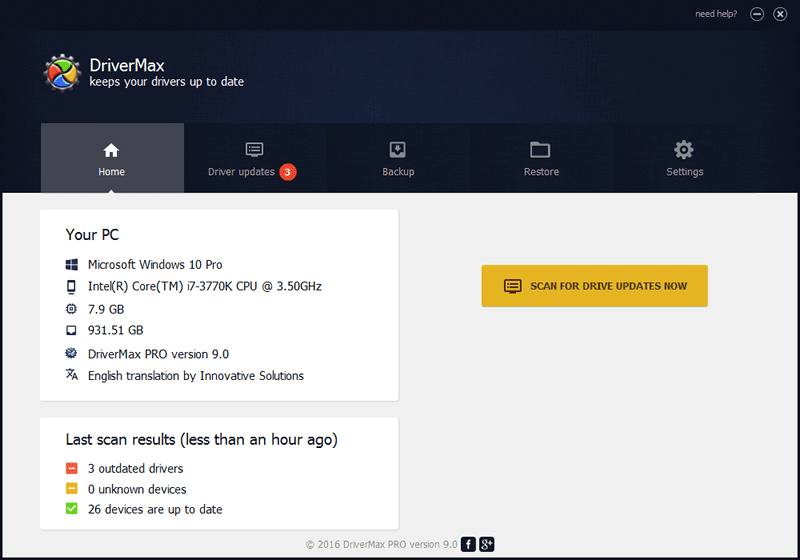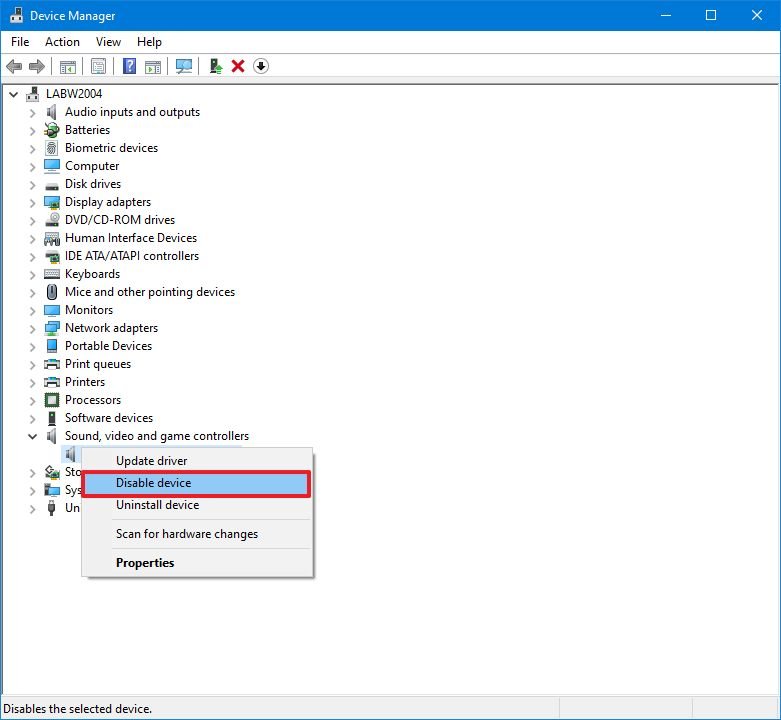Conexant Network & Wireless Cards Driver
Microsoft is investigating errors and issues affecting Windows 10 devices with certain versions of Conexant or Synaptics audio device drivers, Microsoft IME (Input Method Editor), and third-party drivers.
Latest downloads from CONEXANT in Modem. Sort by: last update. Acer TravelMate 4730 Conexant Modem Driver 7.80.4.56 for Windows 7 64-bit 43 downloads. In a bid to boost its Internet semiconductor portfolio, Conexant Systems Inc. Said Monday it is acquiring network-processor provider Maker Communications in a stock deal worth $990 million. Today I managed to update the Conexant SmartAudio HD driver to version 8.66.89.51. It seems working well. Driver version 8.66.89.51 is outside the version range in which Microsoft says there are problems with updating Windows 10 to version 2004. I am curious if I can update Windows 10 to version 2004 now or even to 20H2.
Microsoft is currently rolling out Windows 10 20H2 (aka the October 2020 Update) to all seekers who check for updates via Settings on devices running Windows 10 1903 or later.
However, as detailed on the Windows 10 Health Dashboard, Redmond has already applied update blocks while investigating known issues affecting some computers running 20H2.
Enterprise admin can use Azure's Update Compliance feature to see a list of devices under a safeguard hold and to discover what safeguard holds are in place.
Conexant, Synaptics issues and update blocks
First of all, computers with certain Conexant, Synaptics, or Conexant ISST audio drivers are currently experiencing issues with the May 2020 and October 2020 Windows 10 updates.
Conexant Network & Wireless Cards Drivers
Impacted Windows 10 devices include both client (Windows 10 2004 and 20H2) and server (Windows Server 2004 and 20H2) platforms.
As Microsoft explains, users of such devices might experience blue screens or errors during or while updating the OS on computers.
Because of this, Microsoft has added two compatibility holds to block Windows 10 2004 and later from being offered to systems with the problematic Conexant audio drivers.
Microsoft and Synaptics are currently working on a resolution for these issues and they plan to provide a fix with an upcoming release.
While Microsoft does not recommend circumventing safeguard holds, you can still do that using the Media Creation Tool or a newly included Windows 10 group policy specifically designed to enable users to bypass update blocks.
To work around Windows 10 update installation issues, customers are advised to use this update problems troubleshooter or this guided walk-through.
Problematic third-party drivers
Users of all supported Windows 10 and Windows Server versions including the just-released 20H2 are also affected by an issue leading to some third-party drivers being blocked from installation.
'When installing a third-party driver, you might receive the error, 'Windows can’t verify the publisher of this driver software',' Microsoft says on the health dashboard.
'You may also see the error 'No signature was present in the subject' when attempting to view the signature properties using Windows Explorer.
The known issue is caused by improperly formatted driver catalog files that trigger the errors during the driver validation process.
Starting with this month's cumulative updates, Windows requires DER-encoded PKCS#7 content to be valid and correctly embedded within catalog files.
Microsoft advises users who encounter these errors to ask their driver vendor or device manufacturer (OEM) for updated and correctly signed drivers.
Known Microsoft IME issues under investigation
Windows 20H2 devices are also plagued by four issues with Microsoft IME for Japanese or Chinese languages with the company currently investigating and working on a possible resolution.
The list of Microsoft IME under investigation includes:
• In certain circumstances such as a form with limited input options or handling WM_CHAR message to the input control, apps might be unable to receive keyboard input from users of Microsoft IME for Japanese or Chinese.
• Microsoft IME for Japanese might not react as expected when using SetInputScope() API to change or set the conversion mode for apps.
• When you select a text box and the ImeMode property is set to disabled, the ImeMode indicator on the right side of the Windows taskbar might display the incorrect mode when using Microsoft IME for Japanese.
Microsoft also provides the following temporary workaround for 20H2 users affected by Microsoft IME issues:
- Select Start, type Settings, and select it or press enter.
- Type IME settings into the search box within Settings and select the IME settings that are appropriate to your language, for example Japanese IME Settings.
- Select General.
- Turn on Use previous version of Microsoft IME.
Earlier this month, Microsoft resolved a known issue that was blocking customers from upgrading some Windows 10 1903 and 1909 devices to newer OS versions including 2004 and 20H2.
Related Articles:

Conexant Network & Wireless Cards Drivers
[German]Microsoft has announced a workaround for the Conexant audio driver issue that has been nagging users of Windows 10 version 2004 and later. The problem has been on the agenda since May 2020.
The Conexant Audio driver issue
There are drivers for Conexant ISST Audio or Conexant HDAudio from the vendor Conexant, but they have been causing problems since the release of Windows 10 version 2004. The information can be found in the Windows 10 status area and was already announced for Windows 10 version 2004 on May 27, 2020.
In the Know Issues section of Windows 10, Microsoft states that Windows 10 devices with affected Conexant ISST audio driver may display an error or experience issues while the update is being installed or after. Microsoft further states that it affects Conexant ISST Audio or Conexant HDAudio drivers listed in Device Manager under Sound, Video and Game Controllers with file names uci64a96.dll to uci64a231.dll and file version 7.231.3.0 or lower.
Affected are Windows 10 version 2004 to 20H2 as well as Windows Server 2004/20H2. Microsoft had therefore temporarily stopped the rollout on machines with these drivers. Then, in October 2020, there was a partial fix from Microsoft, which I had addressed in the article Windows 10 2004/20H2: Issues with Conexant audio drivers partial fixed.

Workaround for driver issues
In the Know Issues section of Windows 10, Microsoft has now published a supplement in the form of a workaround as of January 22, 2021. There, Microsoft writes that they have relaxed the upgrade freeze as of January 14, 2021 to allow certain devices with the affected driver to update to Windows 10, version 2004 or Windows 10, version 20H2. Microsoft also recommends in the Workaround section that affected users check with their device manufacturer (OEM) to see if an updated driver is available. Apparently, Conexant has updated its drivers and is already providing them to OEMs. If a new driver is available, install it to surround the issues and avoid an upgrade stop.
If updated drivers are not available for a device and you are offered Windows 10, version 2004 or Windows 10, version 20H2, Microsoft said a small number of devices may roll back to the previous version of Windows 10 when trying to upgrade. In that case, Microsoft’s recommendation is to try again to update to Windows 10, version 2004 or Windows 10, version 20H2. (via)
Advertising
